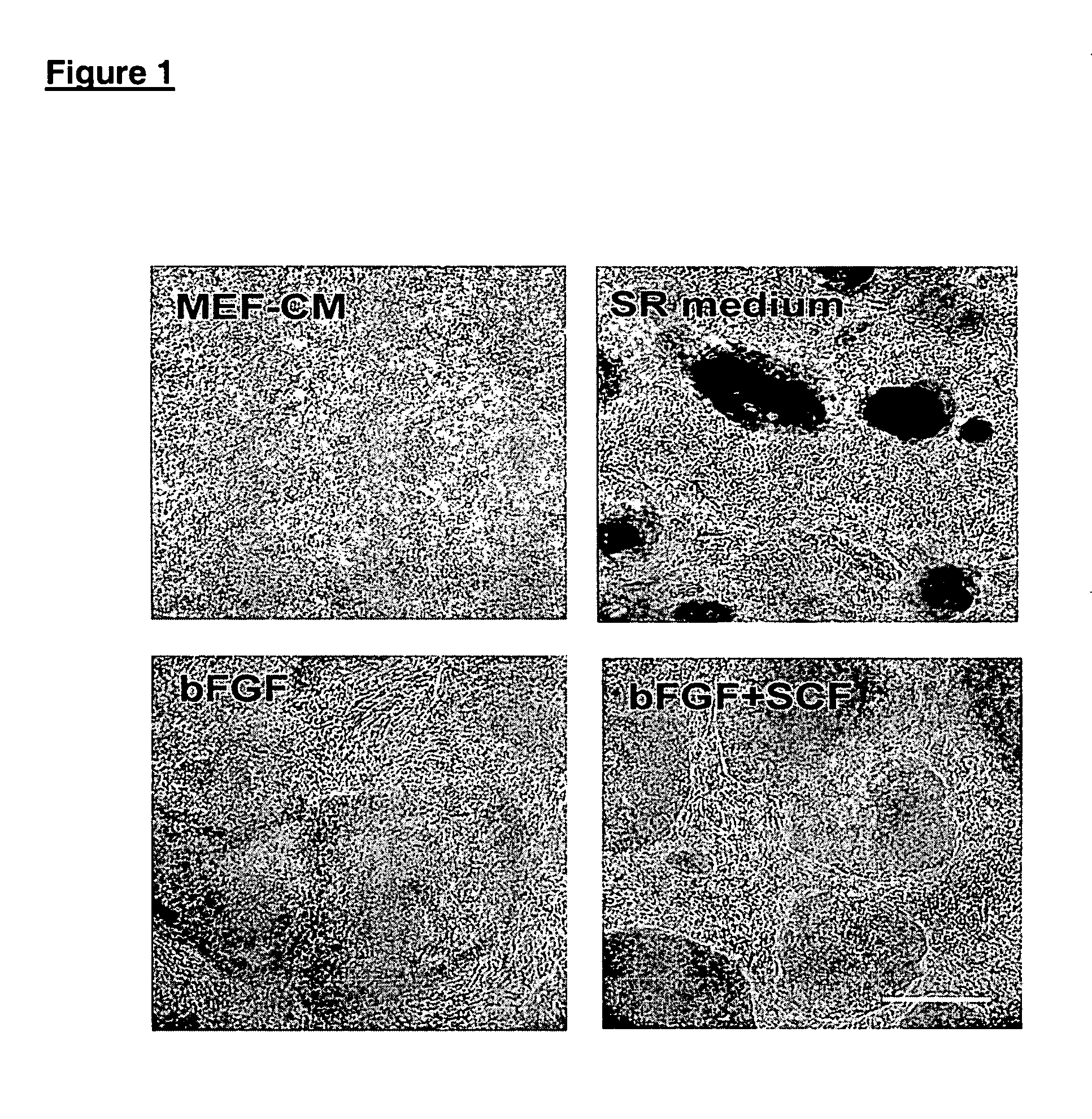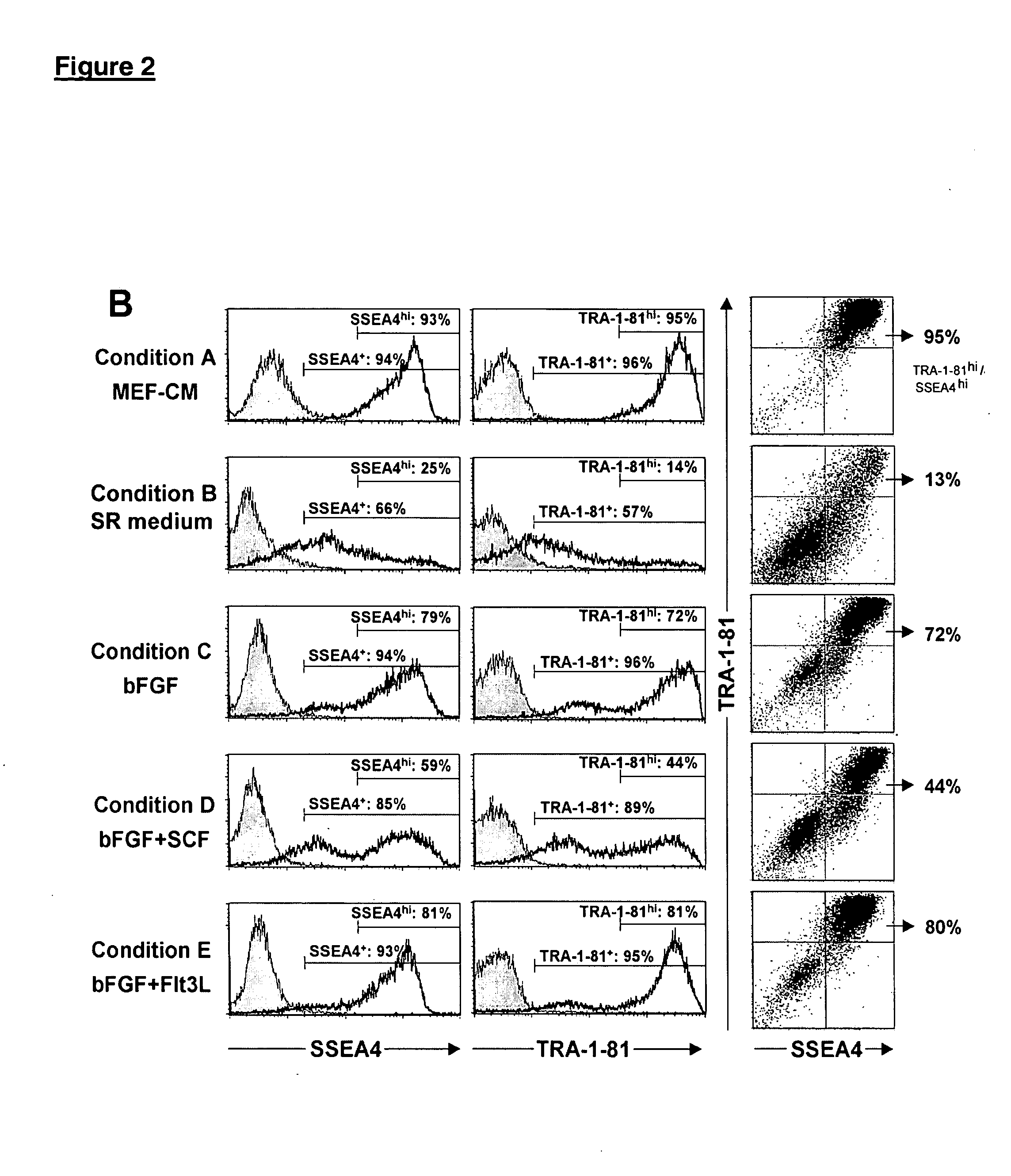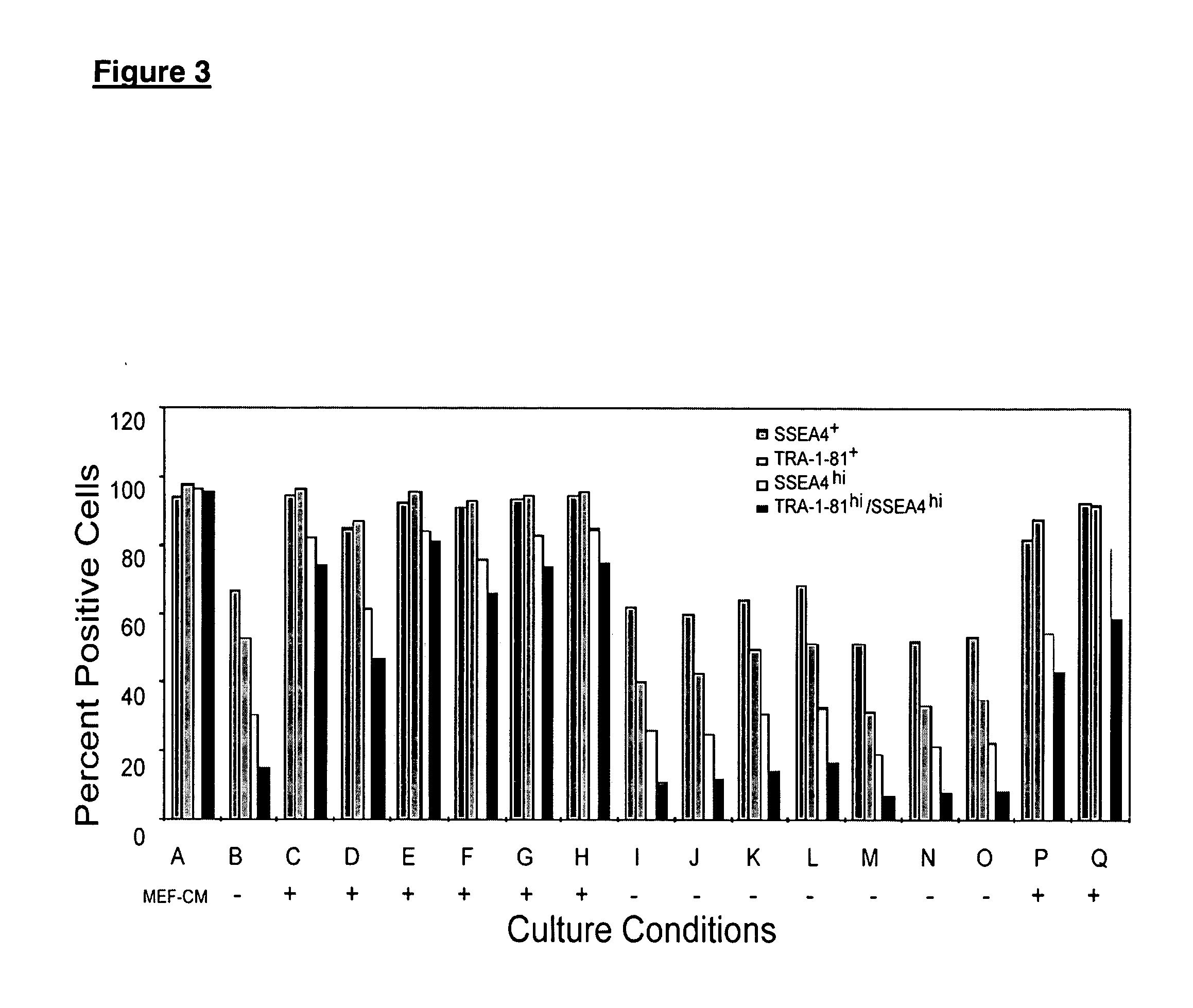Medium for growing human embryonic stem cells
a technology of embryonic stem cells and medium, applied in the field of regenerative medicine, to achieve the effect of cost-effectiveness
- Summary
- Abstract
- Description
- Claims
- Application Information
AI Technical Summary
Benefits of technology
Problems solved by technology
Method used
Image
Examples
example 1
Growing hES Cells Without Feeder Cells in Conditioned Medium
In this example, undifferentiated hES cells that had been maintained on primary mouse embryonic feeder cells were maintained in the absence of feeders. The culture wells were coated with Matrigel®, and the cells were cultured in the presence of conditioned nutrient medium obtained from a culture of irradiated primary fibroblasts.
Conditioned medium (CM) was prepared as follows. The fibroblasts were harvested from T150 flasks by washing once with Ca++ / Mg++ free PBS and incubating in trypsin / EDTA (Gibco). After the fibroblasts detached from the flask, they were collected in mEF medium (DMEM+10% FBS). The cells were irradiated at 4000 rad, counted and seeded at about 55,000 cells cm−2 in mEF medium. After at least 4 hours, the medium was exchanged with SR containing ES medium. Conditioned medium was collected daily for feeding of hES cultures. Alternatively, medium was prepared using mEF plated in culture flasks, exchanging...
example 2
Characterization of hES Cells Grown in Conditioned Medium
Undifferentiated hES cells express SSEA-4, Tra-1-60, Tra-1-81, OCT-4, and hTERT. In order to assess whether the cells maintained in feeder-free conditions retained these markers, cells were evaluated by immunostaining, reverse transcriptase PCR amplification, and assay for telomerase activity.
For analysis by fluorescence-activated cell sorting (FACS), the hES cells were dissociated in 0.5 mM EDTA in PBS and resuspended to about 5×105 cells in 50 μL diluent containing 0.1% BSA in PBS. They were labeled with specific primary antibody and then fluorescent second antibody, and analyzed on a Flow Cytometer.
Similar to the hES cells on feeders, cells on Matrigel®, laminin, fibronectin or collagen IV expressed SSEA-4, Tra-1-60 and Tra-1-81. There was very little expression of SSEA-1, a glycolipid that is not expressed by undifferentiated hES cells. SSEA-4, Tra-1-60, Tra-1-81, and alkaline phosphatase were expressed by the hES co...
example 3
Additives that Promote Undifferentiated ES Cell Growth in Fresh Medium
Experiments were conducted to investigate how different growth factors influence the proliferation and maintenance of undifferentiated hES cells of the H9 cell line.
hES medium contained 20% Serum Replacement (Gibco #10828-028), 80% Knockout DMEM (Gibco #10829-018), 1% non-essential amino acids (Gibco #11140-050), 1 mM L-glutamine (Gibco #15039-027), and 2.5 mM β-mercaptoethanol (Sigma #M7522). This medium was supplemented with 40 ng / mL bFGF; 15 ng / mL stem cell factor (SCF, R&D System #255SC); 100 ng / mL leukemia inhibitory factor (LIF, Sigma #L5283 or Chemicon #LIF 1010); 50 ng / mL ciliary neurotrophic factor (CNTF, R&D system #257-NT); 50 ng / mL recombinant human Oncostatin M (OSM, Sigma #O9635); and 15 ng / mL interleukin 6 (IL-6, R&D System #206-IL).
The H9 cell line (passage 31) was harvested from a culture in conditioned medium, plated onto Matrigel®, and cultured with hES medium with the factors at the conce...
PUM
| Property | Measurement | Unit |
|---|---|---|
| concentration | aaaaa | aaaaa |
| time | aaaaa | aaaaa |
| concentration | aaaaa | aaaaa |
Abstract
Description
Claims
Application Information
 Login to View More
Login to View More - R&D
- Intellectual Property
- Life Sciences
- Materials
- Tech Scout
- Unparalleled Data Quality
- Higher Quality Content
- 60% Fewer Hallucinations
Browse by: Latest US Patents, China's latest patents, Technical Efficacy Thesaurus, Application Domain, Technology Topic, Popular Technical Reports.
© 2025 PatSnap. All rights reserved.Legal|Privacy policy|Modern Slavery Act Transparency Statement|Sitemap|About US| Contact US: help@patsnap.com



